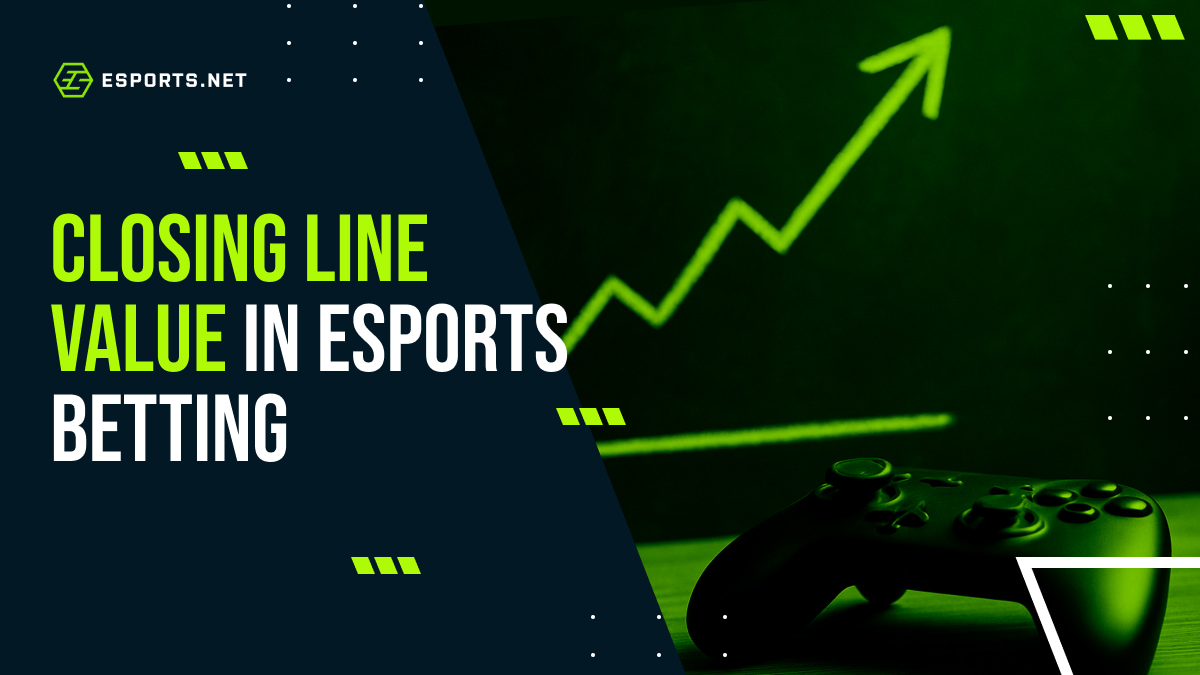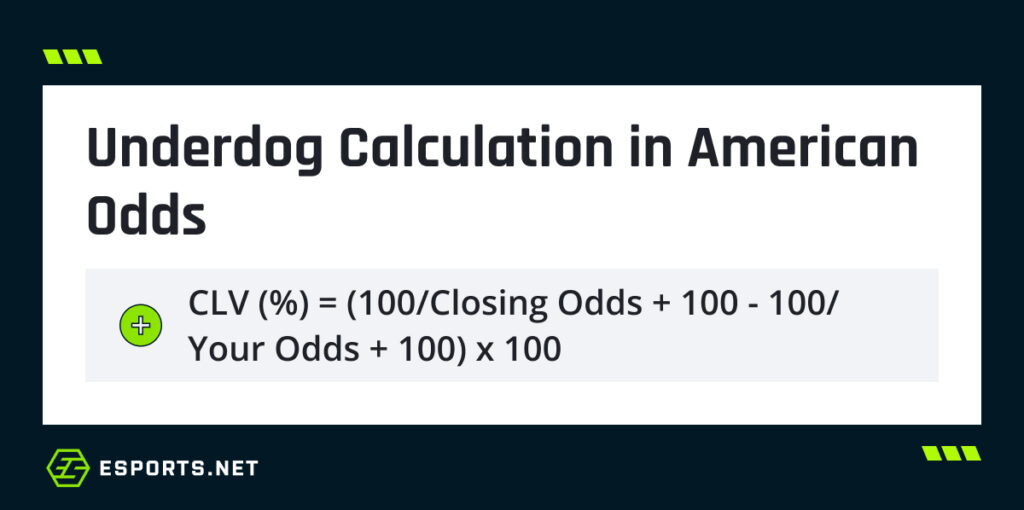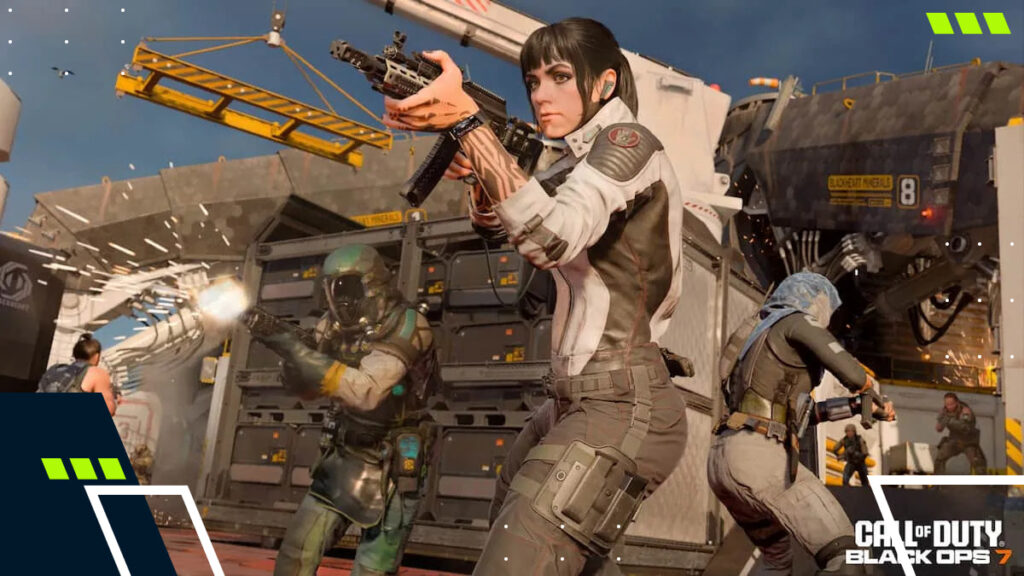What Is Closing Line Value in Esports Betting?
- Calculating your Closing Line Value (CLV) shows whether you’re getting better odds than the market’s final price in esports betting.
- You can track your CLV by comparing the odds you placed your bet at to the closing odds with a calculation that gives you a positive or negative percentage.
- A positive CLV percentage shows that you’re earning additional profit per bet by finding mispriced odds and locking in your bets at the right time.
In this guide, we’ll cover the basics of CLV, how it works, and how you can find the best value bets to beat the bookies and maximize your profits.

What is Closing Line Value?
The closing line value (CLV) is a measurement that compares the odds you placed your wager at to the final odds (closing line) offered by the sportsbook just before the event starts. In esports betting, this measurement shows you whether you got a better price than the market ultimately offered.
For example, you back a team to win at +150 odds a week before their match. By the time the match starts and the bets close (the closing line), the odds have shortened to +120. In this scenario, you have a positive CLV, meaning that you’ve effectively locked in extra value simply by placing the right bet early.
So basically, you placed your stake at a cheaper price since the odds became more expensive closer to the match. This doesn’t always happen, and it depends on a range of criteria such as the team news, more recent results, and the teams’ form.
The key is to spot mispriced odds early and get in before the market corrects closer to game day.
How to Calculate Closing Line Value
Using the closing line value calculation can help you measure how much of an advantage you get from betting earlier at better odds.
Calculating your CLV frequently helps you to learn more about the timing and selections you’ve made. You can use the following equations:
American Odds
We’ve provided some examples of Closing Line Value in esports events for both underdogs and favorites, which will give you a clearer idea of how it works.
Underdog (+) Odds Example
You place a bet on an underdog in a League of Legends match with +300 odds. By the time the match starts, the odds have shortened to +250. Let’s take a look at the edge you get over bettors who wagered later than you.

- (100/250 + 100 – 100/300+100) x 100 = (0.2857 – 0.25) = 3.57%
The result is a positive CLV of 3.57%. What this means is that you are locked in better odds than the market’s closing line and have a higher potential payout than anyone who placed their bets after you did.
Favorite (-) Odds Example
You wager on a favorite in a CS2 match with odds of -200. The odds move as you close in on match day, and the closing line ends up being -220. Let’s take a look at how this affected your CLV.

- (200/200 + 100 – 220/220 + 100) x 100 = (0.6667 – 0.6875) x 100 = –2.08%
The CLV for this bet was in the negative. With a -2.08% CLV, this calculation shows that you actually missed value by betting earlier. The odds moved against your bet, which means that any bettors who wagered after you did got better value.
How to Find Value Esports Bets
If you want to find value in esports bets, you need to learn to spot opportunities where the odds offered by the bookmaker are higher than the true probability of the outcome happening. While CLV is a common concept used in traditional sports betting, it’s a lot more difficult to get right in esports because the markets move much faster and fluctuate more.
We’ll look through how to find value esports bets with your chosen esports betting site.
Comparing odds
Some esports betting markers, especially on smaller tournaments or less popular matches, have low liquidity. In these cases, a couple of large bets can move the line drastically. So, in these betting markets the odds can tighten or drift much faster than on markets with higher liquidity.
You can compare odds across different sportsbooks to identify when one of the sites has inflated odds compared to the market average. In most cases, the more popular sportsbooks have the most accurate lines, giving you a great reference to determine what the “true price” might be.
Team news
Esports rosters can change at the last minute, or even any moment before the match. This sometimes happens because of illness, travel issues, or strategic swaps in the teams. The important thing to keep in mind here is that each player can make a huge difference.
If a key player is missing from a team and they’re substituted by another player, the chances of that team winning can drop sharply, causing the odds to change fast. But bookies don’t always react immediately, which is where the opportunity comes in for you.
If you’re tuned into the team news, social media updates and tournament broadcasts, you can pick up these changes early enough to get your bets in before the markets adjust. All the experienced bettors find the news before the mainstream news does.
Statistical research
Esports might not have the same depth and historical data as traditional sports, but statistical research is still an incredibly powerful tool you can use to your advantage to find value bets.
Let’s say a team has been in great form, winning 4 of their last 5 matches. However, their upcoming match is on a map that they only have a 20% win rate on. They’re historically very poor on this map because of the layout, which makes their strategy less effective.
The market odds will likely be in their favor because of their recent form, but you can find value in betting against them because you understand their historical performance on the upcoming map.
Pros & Cons of Closing Line Value
There are plenty of positives to mention when it comes to Closing Line Value, but it’s worth noting that there are some negatives for bettors. In the table below, you’ll find a breakdown of the pros and cons associated with CLV.
| ✅ Pros | ❌ Cons |
|---|---|
| Pricing advantage | Can still be risky |
| Great for adapting | Takes time to flourish |
| Strategic approach | Markets are out of your control |
| Helps compare to other bettors | Low liquidity markets are volatile |
Conclusion
The Closing Line Value (CLV) is one of the best indicators as to whether you’re finding value in the betting markets. Positive CLV means you found value, placing your bet at a time when the odds were better, which gives you an advantage with a little bit more profit if your bet wins.
A negative CLV means you lost value, and you placed a bet when the odds weren’t as favorable compared to the closing line they settled on just before the match started. Over time, a consistently positive CLV means you’re making more profit than the market.
It’s vital to remember that your bets are never guaranteed to win, so you still need to play responsibly. Even the sharpest bettors go through those unavoidable losing streaks, and finding a good CLV should never take priority over placing smart bets. It’s crucial to manage your bankroll and sometimes opt for the obvious win rather than trying to squeeze out a little bit of extra profit from your bets.
FAQs
What does CLV mean in esports betting?
CLV stands for Closing Line Value. In esports betting, it’s a way of measuring whether you;ve placed your bet at better odds compared to when the market eventually closes.
How to calculate CLV in esports?
You need to compare the odds you placed your bet at to the final closing odds just before the match starts. The calculation is easiest to do with decimal odds: divide the closing odds with your odds and subtract 1, then multiply by 100 to get a percentage. A positive number means you beat the market, and a negative number means you didn’t.
Why is CLV important in esports?
In esports, you can use the CLV to understand whether you’re beating the market or falling behind in terms of timing your bets. You can keep track of how well you’re identifying mispriced odds before markets correct and identify whether your betting is profitable or if you can still improve your profit further with more research and informed decision making.
How to track esports CLV effectively?
Keep track of each bet you place, keeping a note of your odds and the final closing odds. There are several tools you can use to keep track of your CLV, or you can manually track it using a spreadsheet, or simply note it down in your betting journal.















